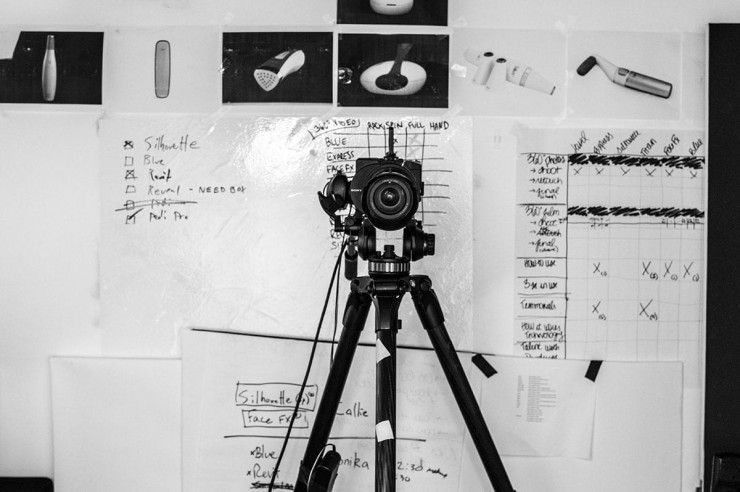
Having a solid plan of attack before shooting is going to make your life as a cinematographer so much easier.
Wouldn’t life be so much easier if we could walk on set and just begin shooting? Director and cinematographer Wong Kar-Wai and Christopher Doyle can improvise many of their shots based on a rough outline that they create the day before. Unfortunately, many of us are not Kar-Wai or Doyle. We don’t have the skills, knowledge, or collaborative relationships to pull off shooting without a plan.
Pre-production for a cinematographer is a vital step in filmmaking. It is the foundation that the structure of the film rests on. The cinematographer needs to be prepared for every aspect of creating the film to ensure that the final product is exactly how the director envisioned the film. The cinematographer can organize their ideas by writing them down on a piece of paper, Google Doc, or on Milanote, an easy-to-use visual platform to organize ideas and projects.
In Depth Cine breaks down how cinematographers can prepare for a shoot by organizing ideas, moodboards, shot lists, and technical preparation to make that first day of shooting a breeze. Check out the full video here:
Ideas
The creation of the pre-production for a cinematographer starts when a director reaches out to them to discuss the project. Sometimes DPs are brought on early in the process, and other times DPs are brought on at the last minute.
Whenever the DP is brought on, the director will discuss the broad ideas of the project with the cinematographer to convey the tone, character motivations, and themes of the film.
The cinematographer’s job in pre-production is to take the director’s vision and try to refine it visually. This is done by organizing ideas, research, and references the director wants to use. The more the cinematographer and director talk, the more clear the cinematic language of the film becomes.
The idea process is also a great place to establish the rules of the film such as natural or artificial lighting, aspect ratio, and camera movement.
Moodboard
A moodboard is a great way to organize and convey a specific visual tone for the project. The collection of stills, paintings, and photographs can help translate the ideas into a visual reference. It’s great to compile images that are visually similar in terms of lighting, color pallet, effect filters, and film stock to clarify the cinematographer’s and director’s vision.
Since creating a film is a collaborative process, share your moodboard with others on the project to see if they come up with any new ideas or fine-tune specific color palettes to fit the director’s vision.
Shot List
Once the visual language has taken shape, creating a shot list or storyboard is the next step. The cinematographer and director should sit down with each other and go over the script or outline, and create a list of shots for each scene.
Write out the important key shots to each scene to get a clear idea of what the shot should look like when it comes time to film it. The cinematographer can also drop in photos such as sketches or photos of the location to act as reference points for the shot. These reference points can be edited into an animatic or rough version that mimics the final cut.
Animatics are useful for films that have a limited run time, complex shots, or for planning a VFX shot.
Technical Preparation
The final step to the cinematographer’s pre-production process is preparing a gear list and lighting plan.
Using the location stills that might be listed in the shot list, a DP can draw out where the lighting will be placed on the image. The drawing can be shared with the gaffer to make sure the lighting plan is practical in the location. Creating a column for each specific department will make the DP’s life and production manager’s life much easier. For a larger project, camera tests may take place to find which combination will work best for the project.
If the production does have a colorist to color grade the film, then allow them access to the moodboard to understand the color palette and how to color the film to convey the theme of the film. The moodboard will also benefit the production designer since it will show them what props are needed, and how to design the setting to reflect the director’s vision.
Technical preparation also means creating a shooting schedule. A shooting schedule is the most important thing a cinematographer can prepare for since the natural lighting of the day will greatly influence when filming will start.

By refining the ideas and mood of the story, the visual language of the film will come through with ease. Having a plan not only guarantees a smooth shoot, but also helps fine-tune the meaning of the project to the director, cinematographer, and the rest of the crew. Structure and being prepared are essential to finish a project efficiently and quickly while keeping everybody focused on the same goal.
Did we leave out any tips on how a cinematographer should prepare for a shoot? Let us know what those tips are in the comments below!
Your Comment
1 Comment
I come up with Ideas on the way to the shoot! :)
August 17, 2021 at 12:19AM